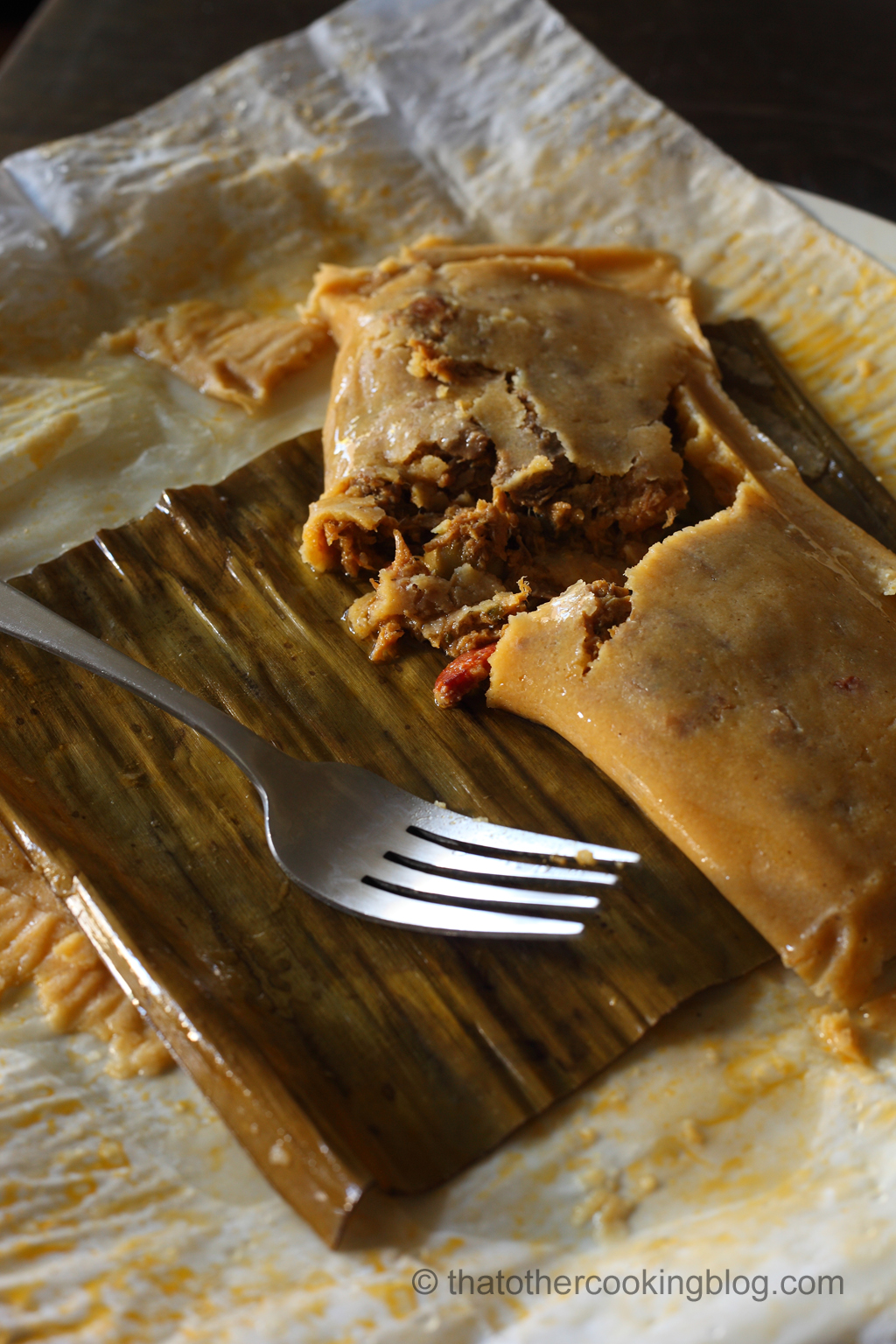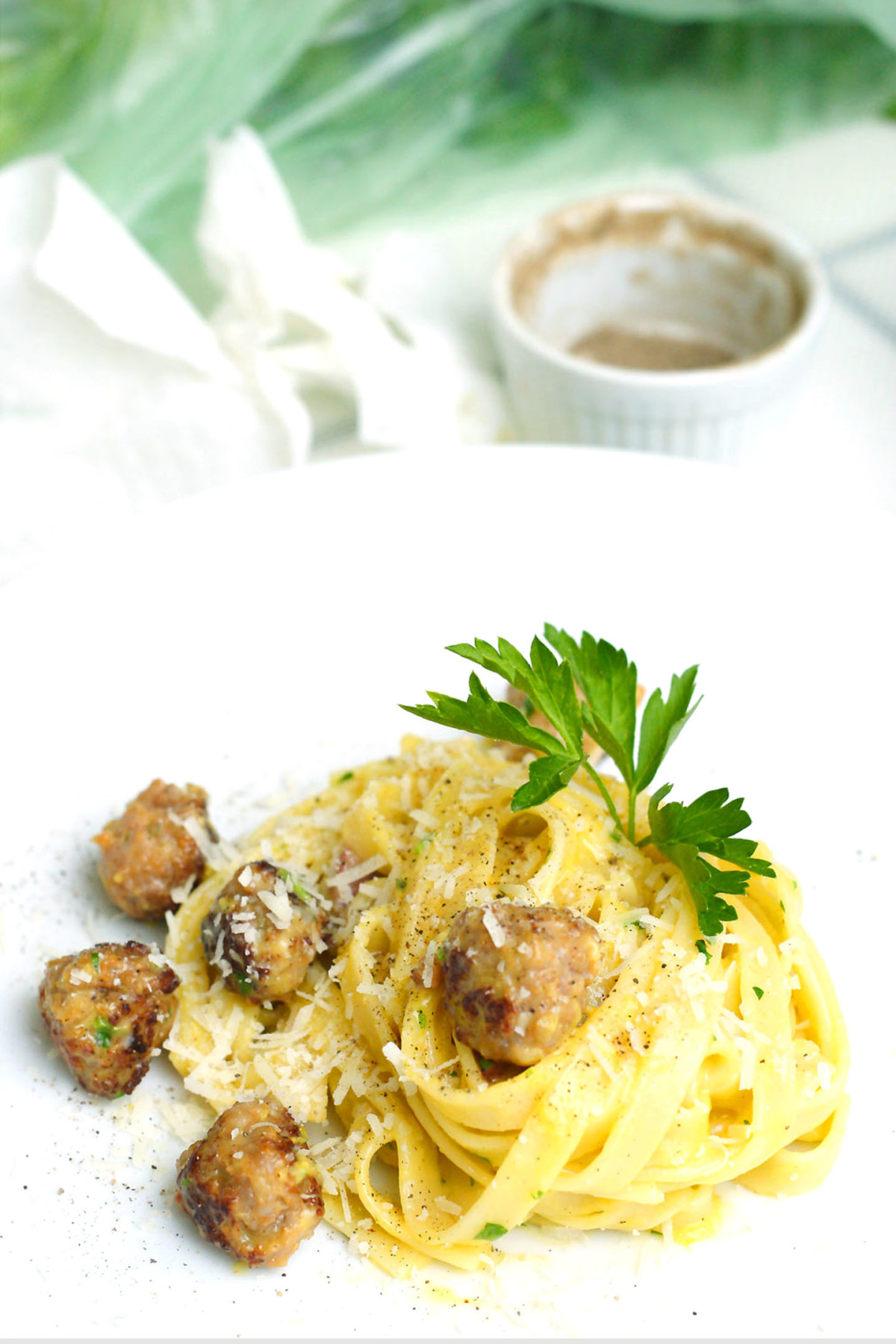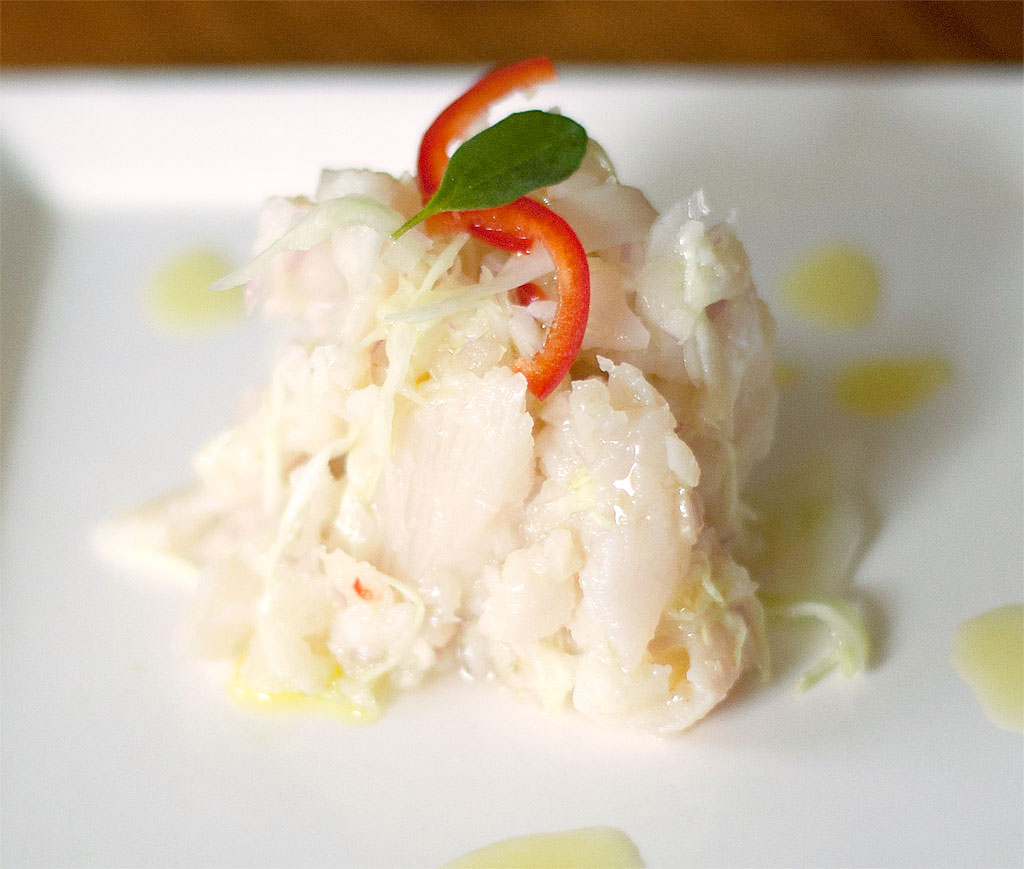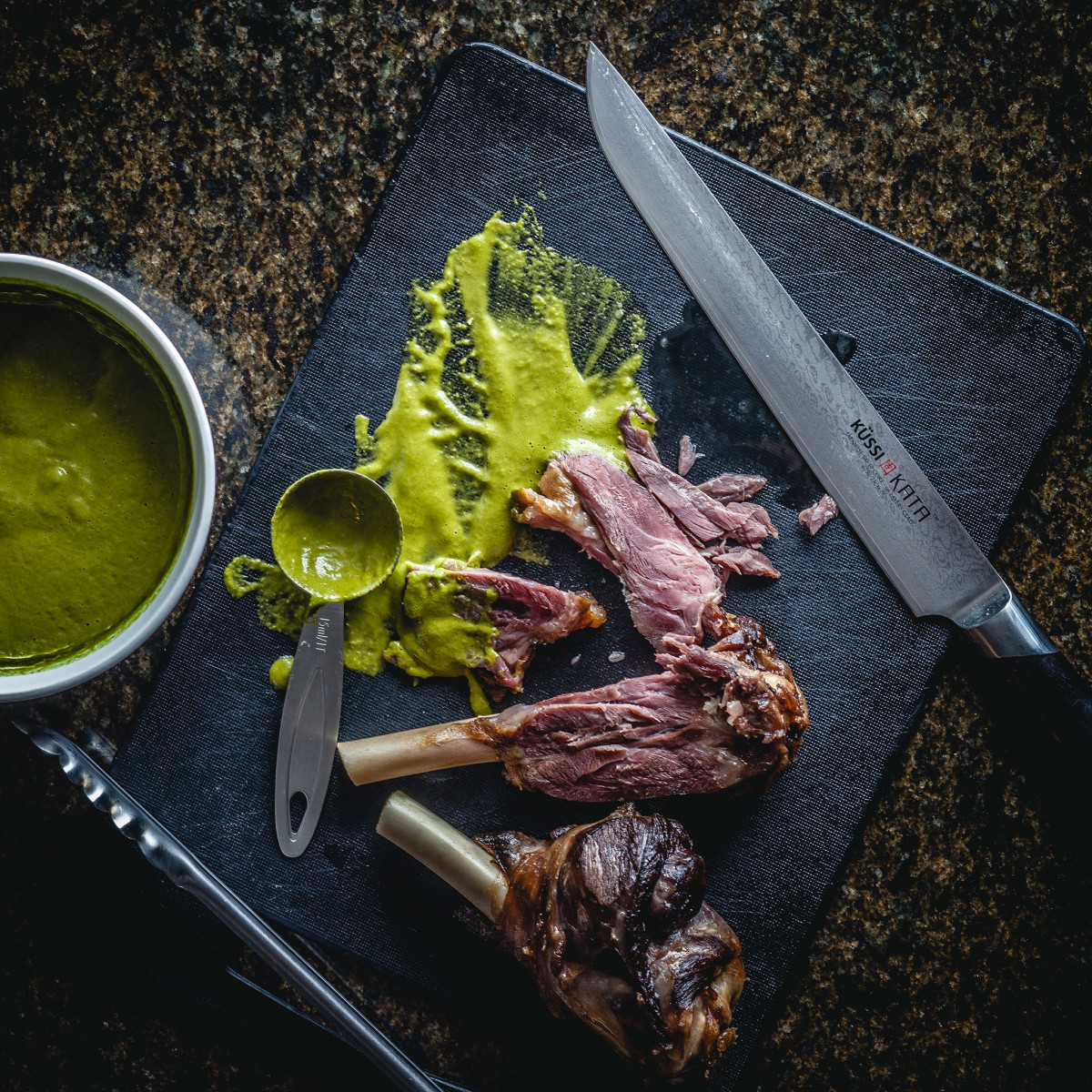First. Hope you all had a wonderful Christmas. Second. Hope you all had plenty of your favorite Christmas delights. Third. We’re here to talk about Hallacas. I’ve posted about this dish a couple of times in the past. We venezuelans eat hallacas only around christmas and new years time. It’s a very popular dish of indigenous origins and spanish influences. It’s also similar to the even more popular mexican tamale or the puerto rican pastel. We usually make them in large batches. 30, 70, 200 hallacas, depends on how many people are willing to serve time in the kitchen for an entire day wrapping portions of masa dough and stewed meat in green plantain leaves. Takes forever and has to be done under the influence of alcohol to make the task bearable. I’m talking 3, 4 sometimes 5 hours, just to wrap the little suckers, back breaking work. Bigger families are better off during this ritual.
I made mine with the help of my sister. We made about 30. Took about 13 hours of work. Ok, under normal circumstances, it would have taken about 10 (I’ll talk about what went wrong and how the mistake was corrected). As horrifying as this all sounds, it’s worth the human sacrifices involved. I don’t know what my favorite thing to eat is, because it changes depending on the time of the year, but I could eat hallacas any time, any day, all day, for days, forever. Maybe this is my favorite thing to eat in the world. People share hallaca recipes, they’re given as presents, you give a family 10 hallacas, but you get 15 of theirs back…… hallacas everywhere, you eat them 3 times a day sometimes, it’s like madness, they freeze extremely well, and after a long night of heavy drinking and partying, a warm hallaca in the morning (or mid afternoon) can mean the difference between feeling like a zombie in no celebratory mood or being ready to rock all over again.
Ingredients (makes 30):
The stew:
1 large chicken
6 pounds of pork shoulder, cut is small cubes
6 pounds of beef for stewing, cut in small cubes
150g spanish chorizo, thinly sliced
1 1/2 cups of tomato sauce
1000g of chicken stock (explained below)
lard (keep about 150g handy)
Veggies for the stock:
3 onions, whole
3 celery stalks, whole
3 large carrots, whole
2 leeks, whole
3 red bell peppers, remove white flesh and seeds
3 whole garlic heads, cut crosswise.
Spices and herbs for the stock:
3-4 bay leaves
2 tsp ground coriander seed
2 tsp oregano
1 tsp paprika
1 cup of cilantro finely chopped
1 cup of parsley finely chopped
Other ingredients:
1/4 cup anato seeds (to make the annatto tinted oil)
Plenty of olive oil as needed (used as explained below)
salt and pepper to taste
The dough:
800g precooked corn meal. (harina pan)
1000g chicken stock (explained below)
500g plantain leaf stock (explained below)
50g annatto tinted olive oil (explained below)
100g water
Garnishes:
1 cup of capers (reserve the brine)
1 cup of seeded green olives (reserve the brine)
1 cup of pickled assorted vegetables (reserve the brine)
1 cup of golden or red raisins
1 cup julienned red bell pepper raw
8 hard boiled eggs, sliced in rounds (optional, I didn’t add this)
Wrapping:
1 roll of parchments paper
1 bag of green plantain leaves (hard to find in certain places)
1 roll of tin foil
(I’ve modified the traditional wrapping technique to speed up the process, hardcore venezuelan traditionalists, bear with me please)
Break down the chicken. Skin the breasts and legs. Reserve skins, wings and back (for stock). Pressure cook the chicken in salted water (add enough salt as if you would for pasta) for 1 hour (about 2 1/2 in a regular pot). Once cooked, allow to cool. Shred, remove the bones. Strain the cooking liquid, this is chicken essence really.
Brown the pork and beef in batches. Hot pan or cast iron dutch oven, with some oil (this takes forever, because it’s a lot of meat and I only had one hot pan going, but I “used the force” and pulled through). I added pinches of salt here and there, I believe salt helps develop flavor. Deglaze with waster or wine as you go, don’t leave any brown bits behind. This is essential and will make your hallacas stand out from the rest… trust me! Place browned meats on a tray and reserve.
Browning the stock ingredients. In the same pot used to brown the meats, add plenty of olive oil and fry the chicken wings, skins and back. You could roast them in the oven as well, but I was lazy, and wanted faster browning. Turn chicken stuff a couple of times, when you get a nice golden color, remove from the heat.
Time to make the chicken stock. Add the browned chicken pieces to a stock pot. Again, I used my pressure cooker. Add the veggies. I cut all the vegetables in half lengthwise, not need to chop them up. Cover with enough water. In this version of hallacas, I extract the flavor from the veggies and discard the veggies themselves. No worries, there’s no flavor left after one hour of pressure cooking or 2 of conventional simmering. Don’t add salt. Strain the liquid and reserve.
Time to make the stew. Add some olive oil. Add the tomato sauce. Cook on medium heat until tomato is cooked and has darkened in color. Add the meats. Simmer with the tomato for a a few minutes. Add 1/2 of the stock. Save the rest of the stock to make the masa dough. Cook until all the liquid has evaporated. We want concentrated flavors. I don’t use store bought stocks or bouillon cubes, so a little more work is needed to achieve lots of flavor, but let’s be honest, who wants their 13 hour labor love tasting like a knorr or maggi product? … yeah, I rest my case. Ok, here is a tricky part in the process. Adjusting the stew fattiness… I worked with very lean pork this time (it’s what I found at the store) and the stew beef had little fat too. I found myself dealing with a rather lean (dry) stew. I don’t like to thicken stews with starches if I can help it. I added a few tablespoons of lard, until it looked glossy and beautiful. Taste as you go. You don’t want to taste fat, just awesomeness. Keep cooking. I want to make sure the lard has spent some time in the pot cooking along with everything else. It took about 3 hours to get the batch of stew ready. The proteins need time to breakdown. 30 minutes before the end of cooking time, add the spices. 10 minutes before the end of cooking time, add the herbs. Adjust salt, pepper. Remove the bay leaves when done.
In oder to make hallacas that don’t require wrapping them in plantain leaves (wrapping hallacas in plantain leaves is a very time consuming process as I mentioned before, so I shuffle things around a bit), you’ll need to extract the plantain leaf flavor, discard the leaves, and add the flavor into the hallacas themselves. Cut the plantain leaves in small squares, about 8″ by 8″ and pressure cook for about an hour. Strain and reserve the liquid.
To make the annatto tinted oil. In a small saucepan. Heat up about 1/3 of a cup of olive oil. Add the annatto seeds. And heat up until lightly bubbling. Remove from the heat. allow to rest. The coloring agent in the annatto will be released and the oil will be of a bright deep orange color, which we’ll use to tint the dough and add that beautiful color to the hallacas.
To make the masa dough. Add the corn flour in a big bowl or stock pot. Add the stock. Combine. Add some of the plantain leave stock. This flour can absorb lots of liquid. About 2 times its volume, if not more, before it starts to become over-hydrated (which happened to me… read on). So, for every cup of flour, make sure you have 2 cups of liquid. I honestly don’t measure anything during this process and I taste as I add liquids, salt or annatto tinted oil (don’t add the annatto seeds) until you end with the right consistency, color and flavor. It’s hard to describe this in a simple recipe. I also add the brine liquid from the capers, pickled veggies and olives (to taste, but I have to tell you, this is where the main christmasy flavor component comes from and it is wonderful to have some acidity in the dough) The final result should taste great, as if you would want to eat it alone. Chicken stock is the main flavor, but then adding the plantain leave stock gives it that venezuelan christmas flavor that is so characteristic, and the annatto oil, gives it that rich yellow tint which is classic.
Ok, how do we put these things together. Hmm… ok, I guess I’ll give it a shot at explaining this in writing. I still ended up using some plantain leaves to ensemble them. Because the green color of the leaves are extremely inviting, and add extra flavor, but the traditional wrapping part of the deal was simplified… by a lot.
Prep ahead. Cut up a bunch of 14″ by 14″ parchment paper squares. One per hallaca. We made 30. Cut up a bunch of 10″ by 10″ plantain leaf squares. Cup up a bunch of 14″ by 14″ tin foil squares. Get a clean large ziplock bag or something similar. Spray it with some cooking oil. Get ready. Here how it goes. Place a parchment paper, place the plantain leave square in the center. Add a scoop of dough in the center, about 3 Tbsp. Place the oiled up ziplock bag over it, and press down, and spread out, making a disk, of about 3mm-4mm of thickness. Scoop about 2 Tbsp of stew and place it in the center of the dough disk. Press it down a bit.
Add the garnishes. For example, 3 raisins for some nice sweet little kicks, 1 olive, a few slices of pickled veggies, like cucumbers, onions, carrots, peppers, but only a few little slices for acidity accents. Add a slice of that julienned bell pepper for color and done.
Now, the folding. I fold them as I would a letter. Fold in half, then fold in half again. Fold the ends of this rectangle in, you want to end up with a little packet of rectangular shape. Secure this little packet with tin foil. Fold the tin foil around it in a similar fashion. The traditional method requires lots of plantain leaf folding, plantain leaf breaking, hallacas bleeding out their innards, countless disasters which the approach explained here, should eliminate.
To finish it all up. In a huge pot, or multiple pots, full of boiling water. Cook the hallacas for about 40 minutes. Remove from the water, and refrigerate, freeze or eat immediately. The hallacas are done. Time to spend the next 2 hours cleaning the kitchen.
Over hydrated hallacas…. a close call! So, I’ve mentioned that things went south for a moment. We cooked the pilot hallaca, the test, a single hallaca, just to make sure all 30 would be good. The test came back. The dough didn’t set. The dough was too creamy, with no bite, no body. THE HORROR. I’ve been making hallacas for 3 years, which means, I’ve made hallacas 3 times. This has never happened. I’ve been complaining about tamales all night that night, sipping on wine, chatting…about how most of the ones I’ve had were dry and this and that. And now I’m being punished for my ingratitude. My hallacas could very well end up in the trash at this point. Long story short. I had to place the hallacas in the oven. In batches, because couldn’t possibly “bake” all 30 at once. I don’t even want to imagine having to deal with 200 hundred. 3 hours in the oven at 350F with the oven door slightly open. And that did the trick. The hallacas had the right amount of moisture and had properly set. I was back! Christmas tradition accomplished. I’m ready to take a year off now… form making hallacas that is.
if you want to read about my previous post on hallacas check these out!
hallacas en papillote plantain leaf and caper brine infused masa dough.
hallacas merry christmas 2012.
happy new year, it’s almost there!
Wanna get more sous-vide cooking guides and cool cooking how-to’s in your mailbox? You know what needs to be done!
We never spam. You should only be getting updates when new content is posted on the site. We also respect your privacy. We don’t share your email address with anyone and you can unsubscribe anytime!






















No comments
Huge effort Paul, lucky you only do this once a year!
I know! between this and turkey day, Im spent! 🙂 thank you so much for visiting me!
Wow, that looks like an extremely delicious meal and a lot of work! I never heard about hallacas before, but it sounds pretty funny, all that sharing and eating any time…
Thanx again for a great recipe and an amazing post, Paul.
xx
thanks Rosa! it was insane work hahahah, I’m glad is over and my fridge full of those delicious things hahaha
I think it is great that a recipe can enthuse people so much and make them put up with all the hard work! All I can say is: Viva Hallacas! I hope to eat some one day …
it really does bring whole families together to help in the making during christmas time… I think that’s what’s kept this traditional dish alive for so many years.
OMG. I love Hallacas and this recipe is spectacular. Thanks for sharing 🙂
thank you Brenda! so happy you approve!!!!
Reblogged this on Masala EATS Miami and commented:
My very favorite Holiday food
From personal experience I know these are amazing!!!
hahah thanks Lotis! you should come by and grab a few!
This looks SUPER labor intensive, but the results also look wonderful. Congrats and major props to you for this recipe 🙂
thank you Jess, I got all the cooking out of me for the rest of this year 🙂 haha!
These look terrific!
thank you!!!
Wow, this looks so delicious – and having it only a few times a year probably makes makes it even tastier!:)
I hope this is just a first taste of Venezuelan dishes. Would be happy to learn more.
thank you Ronit. Venezuelan cooking is a lot simpler than this in general. But really delicious, like a combination of italian and spanish, indigenous ingredients, like yuca and haring pan, etc. Unlike some people think, venezuelan food isn’t spicy hot.
Sounds similar to the foods combinations I grew up on in Israel – with grandparents with Spanish, Italian, Macedonian and Moroccan origins, combined with many other influences… 🙂
yeah, it truly is influenced by so many cultures and we do love our beef and pork.
Same here 🙂
Thanks for sharing this Paul as I had never heard of it. It looks quite complicated to make too and delicious. Those leaves remind me of many Indonesian dishes, though chorizo is completely non-Indonesian 😉
🙂 thanks sofia! I don’t know about complicated, i think it’s my poor writing skills hahaha, it boils down to this, make chicken stock, make a stew out of chicken, pork and beef, and make the masa dough. Wrap everything in a plantain leaf, throw in a few olives, capers and raisins, and enjoy! Maybe this is what I should have posted hahahah! Does take hours though, but only because, well, the components take long, stewing, making stock, etc, and then making 30 of them, takes long too, but seriously, 200 is more standard… i can’t even imagine.
hahaha that does sound easier 😉
😉
Couldn’t get your hallacas out of my mind since reading about it this morning. Used to have the luxury of eating tamales at Christmas, courtesy of friends and relatives while living in California. Was beginning to feel sorry for myself when I couldn’t find a restaurant in the area serving tamales/hallacas, until hubby reminded me of Don Pablo’s fiesta platters. So, a tamale platter was ordered. Should be ready in half an hour, yay! Of course, they probably wouldn’t taste as good as yours. They look absolutely mouth-watering! Happy Holidays to you! XOXO, Angie.
hahahaah nice!!! and thank you so much! so glad you got all exited about tamales after reading my post. And I hope they taste better than mine, but thank you! Happy holidays to you as well! Take care Angie!
Why is it that the best traditional dishes are always the most time-consuming? Wouldn’t it be great for the Moms of the World if the favorite dishes were no more hard to prepare than, say, a cup of coffee? I’ve had the pleasure of enjoying homemade tamales and can only guess how delicious your hallacas are, Paul. I’m glad you stuck with it and perfected the recipe. Now all you need is another few sets of hands to help you next Christmastime. Hope you and yours have a wonderful New Year.
thank you John! yeah, I don’t know why the moms of the world all decided to rebelled against fast food with time consuming traditions, but maybe they have a point 🙂 I will definitely be making these next year, but I will be drafting some extra help, no way I’m going in with just me and my sister next time. Its almost suicidal. Delicious though 🙂
OMG this post is a masterpiece! My suegra always has something like these prepared, but I’ve never seen the making of them. Wow. I definitely want to try this ASAP, though I think i’ll have to enlist help. I really can’t get over this one. These look amazing and the fact that you documented the whole thing…wow. I wish I were there! The photos are stunning. I wish you could send me some! Feliz ano nuevo!
Feliz Ano Nuevo Amanda! And thank you so much for your beautiful comment. I’m so glad you are familiar with these little guys! I’m glad too that you enjoyed the photos! it was a day of hard work but really worth it. Here’s the thing, I think the hard work is in a way proportional to the number of hallacas, because basically, it’s all about making a stew, rendering stock, making the masa dough, and then making the little packets. When I’ve made fewer, I’ve been able do everything in a few hours. But enlisting help and spending time with friends and family is usually more fun 🙂 If you do make these, let me know how they turn out, and if you have questions, also let me know, more than happy to help!
Awesome. Thank you. I can’t wait to try.
Man I’d love to see these at a potluck around here. I don’t see my self venturing into the world of Hallacas or tamale making but I’d really like to eat some now. Interesting garnishes too. Happy New Year!
thank you Wendy!!! I could fedex some your way 😉 I got about 15 left in the fridge! Happy New Year!
Happy New year Paul!
I’ve never tried Hallacas, but they sure look delicious!
you should definitely try it! thank you and happy new year!!!!
Paul, what a beautifully executed tutorial! I’ve never used plantain leaves in my cooking, though I’ve had fried plantains over the years (delicious!) and it shows me how easily we can stray into a cooking rut with what we prepare in our kitchens each week! The hallacas are beautiful and the list of ingredients has many flavors that I love. Thanks for sharing your experience and recipe with us!
Best wishes in the new year!
Allison
Happy New Year Allison! and thank you, and welcome of course, so glad you enjoyed this post! I’ve had fried plantains as well, both ripe and green, totally different things but equally awesome 🙂 There’s something about the taste of the plantain leaf and the corn meal that at least for me and am sure for many venezuelans, is the taste of christmas 🙂
I’ve never tried Hallacas before, they sound so delicious. I must give the recipe a try! 🙂
Jess
thank you! you should, and check out the links to my older hallaca posts in there please, there’s tons of info! hope you had a great new year’s celebration!!! and my best wishes on this 2014 year!
I grew up in Texas where tamales were a tradition among many of our neighbors and were given to us as a gift. My husband and I once made tamales for a dinner of 12 one year and I can’t begin to tell you how many we throw away until we got them to be tender and not dry. Your hallacas sound way better than any tamale I have ever had. 🙂
thank you Karen!!! 🙂 Yeah, it’s always a battle trying to get the proper amount of moisture. I erred on the “too much liquid” side and the dough was like a partially set polenta, but after the oven treatment I was able to get the to set correctly and still remain juicy and not dry. It’s so much work though hahahh 🙂
How did I miss this post?!?! Props to you and your sister for doing all that work. I got tired just reading through the ingredients list. Haha! Looks absolutely delicious though. Reminds me of the Indonesian dish Burasak although that has definitely a lot less work involved.
hahahaha, thank you! yeah, the list of ingredients seems endless… i actually think it is endless hahah… but it could all be simplified. I looked up Burasak and they look so similar! I want to try making this, but I couldn’t find a recipe in english!!! 🙂 if you have a link, send it my way please!!!
It’s on my to-cook list as well so I’ll send you the recipe once I get my hands on it.
will patiently wait!
I always did wonder how you always got exactly one olive in each hallaca.
hahahaha 🙂
Happy New Year, Paul!
This line made me laugh out loud: “Takes forever and has to be done under the influence of alcohol to make the task bearable.”
I made tamales once, by myself, and it took me TWO DAYS! So worth it though . . . doesn’t mean that I want to do it more than once a year 🙂 These look amazing. Glad that your sister could help!
hahhaha thank you!!! and Happy New Year! I’m in Vancouver now, I haven’t been able to get back to blogging, still sorting out a ton of crap, but I do have a kitchen in my hotel room, so hopefully I can back into it soon. I haven’t even been reading other blogs, been so busy lately. Hope you’re doing well!